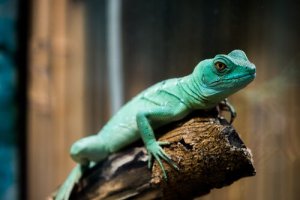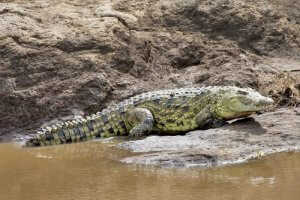10 Cold-Blooded Animals from Around the World

Unlike mammals, cold-blooded animals need sunlight and other heat sources to maintain the right body temperature. Also known as heterothermic or poikilothermic animals, they’re unable to regulate their bodies’ metabolic functions and depend on their environment to survive. We’ll tell you more about them in this article.
How do cold-blooded animals survive?
While these members of the animal kingdom don’t have warm blood, they can withstand huge drops in temperature without suffering from hypothermia, as so often happens with mammals. If their body temperature does drop, physiological activities slow (such as their heart rate).
When this happens, their energy expenditure decreases, and they’re able to survive through even the harshest of winters. Their main heat source comes from the environment. In other words, they rely on the sun to allow their organs to function properly. If they get too hot, they have a “convection” or “conduction” system to regulate their temperature.
Some cold-blooded animals spend all day sunbathing. When the temperature falls, they slow down, becoming easy prey for any potential predators.
Cold-blooded animals
Among the many species that use external factors to regulate their body temperature are:
1. Geckos
Geckos and other small lizards come in all shapes and sizes, though the majority are fairly small. This includes lizards of the Gekkonidae, Teiidae, Lacertidae, Tropiduridae and Gymnophthalmidae families. They’re commonly found in countries such as Argentina, Ecuador, Bolivia, Chile (home to more species than any other), Spain, Peru, Italy, and Venezuela.

2. Cold-blooded animals – lizards
Like geckos, lizards belong to the suborder of reptiles. They have four legs, and highly mobile eyelids. Some species, such as the komodo dragon, can reach over 9 ft in length. They come in bright colors, and have the ability to drop their tails if caught by a predator.
3. Vipers
The viper’s venom is one of the most deadly in the world. They have long, hinged fangs, which they can fold back against the roof of their mouth. When they open their jaws, these fangs return to the “lethal position”, allowing them to inject venom into their prey. The majority of vipers are found in Africa.
4. Chameleons
The chameleon is a scaly reptile with the ability to change color depending on the circumstances or environment. They can move their eyes independently, and have very fast, very long tongues that are coated in sticky saliva, allowing them to capture insects.
5. Iguanas
These reptiles are mainly found in the US, Mexico, the Caribbean and South Africa, although there are some species in Fiji and Madagascar. They’re active during the day, and feed on plants and small invertebrates.
6. Crabs
Like other crustaceans such as shrimp, lobsters and prawns, crabs have five pairs of legs. They live on the sea floor, returning to the shore to breed. When they grow, they shed their exoskeletons.
7. Crocodiles
Crocodiles are one of the oldest animals alive on earth (believed to have existed for over 80 million years) and are the largest reptile in the world. They have short legs, robust bodies, an elongated snout and a long tail, that can be almost the same length as their body. They’re faster in the water than they are on land, and their tough scales act as “solar panels”.

8. Ants
Ants are another cold-blooded animal, and have evolved over millions of years. They live in highly-organized colonies, which are often made up of thousands of individuals. Infertile females act as workers. Only the queen is able to reproduce, by mating with a group of males.
9. Toads
Both toads and frogs are cold-blooded and belong to the amphibian family. In total, there are more than 6000 different species. Frogs have moist, smooth skin and can jump huge distances. Some are aquatic, while others climb trees. Toads have rough, dry skin. They’re usually larger and less agile than frogs, and tend to live in moist burrows in the ground.
10. Cold-blooded animals – sharks
In the majority of cases, sharks are cold-blooded. They can be found in warm, temperate waters in every ocean around the world, and have been evolving since the Miocene era. They’re typically large, robust animals, with a large bow-shaped mouth, and a jaw 300 times stronger than a human’s.
This text is provided for informational purposes only and does not replace consultation with a professional. If in doubt, consult your specialist.